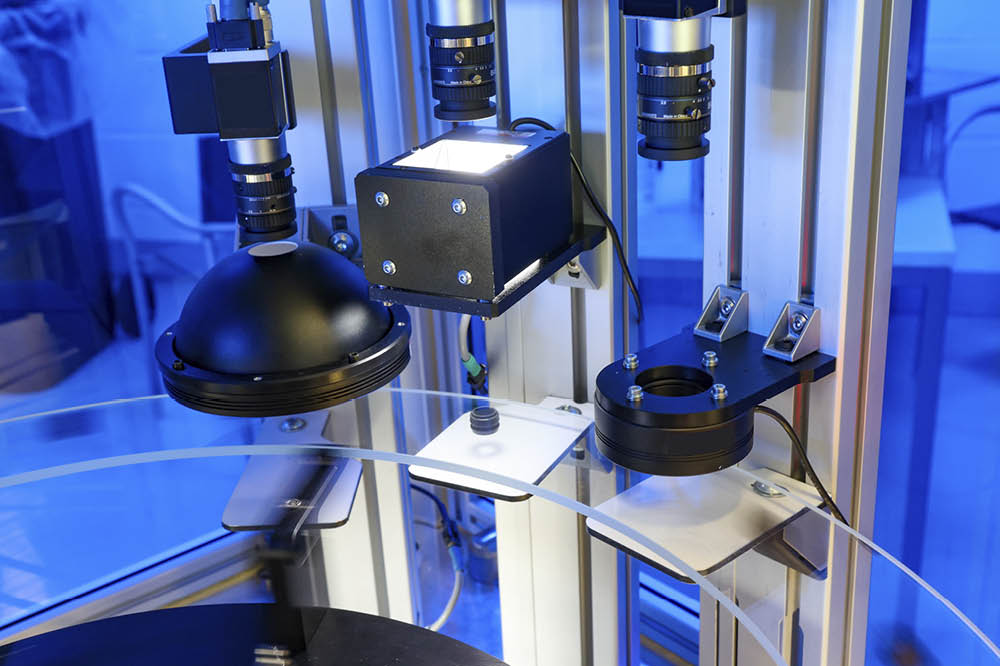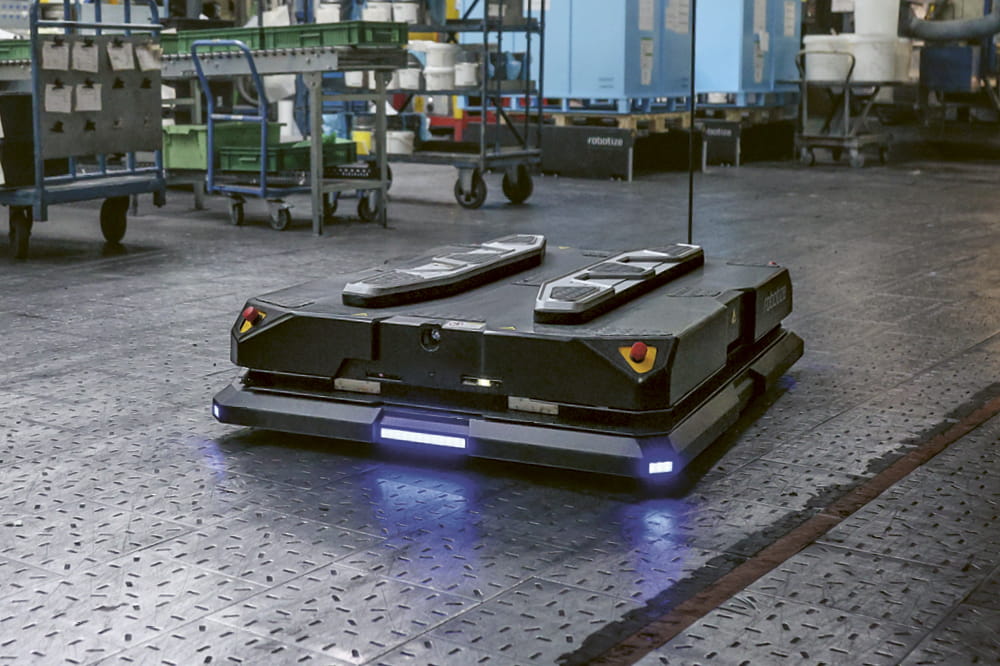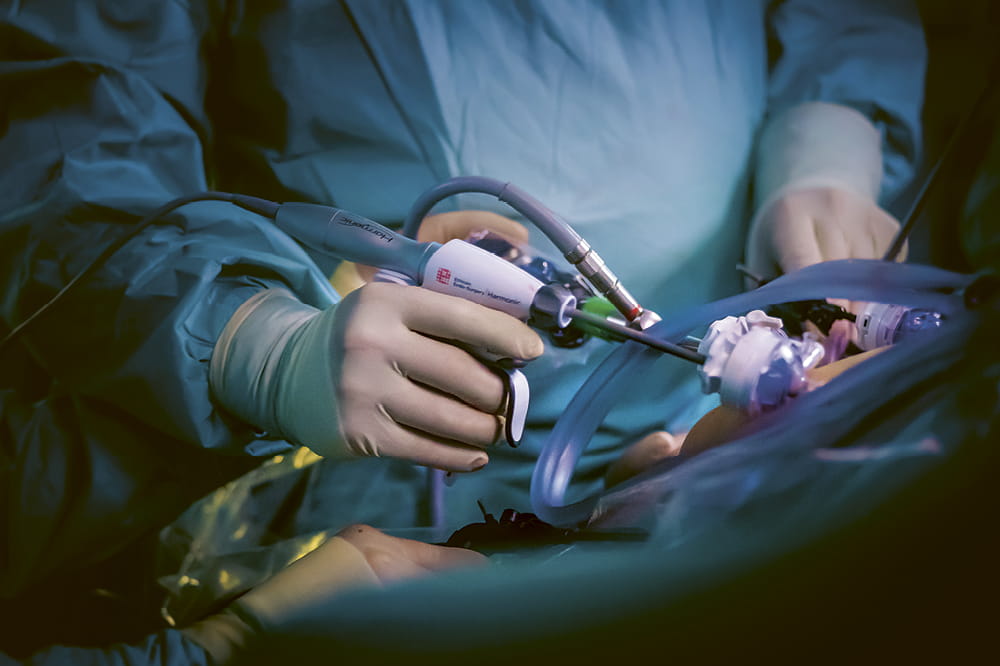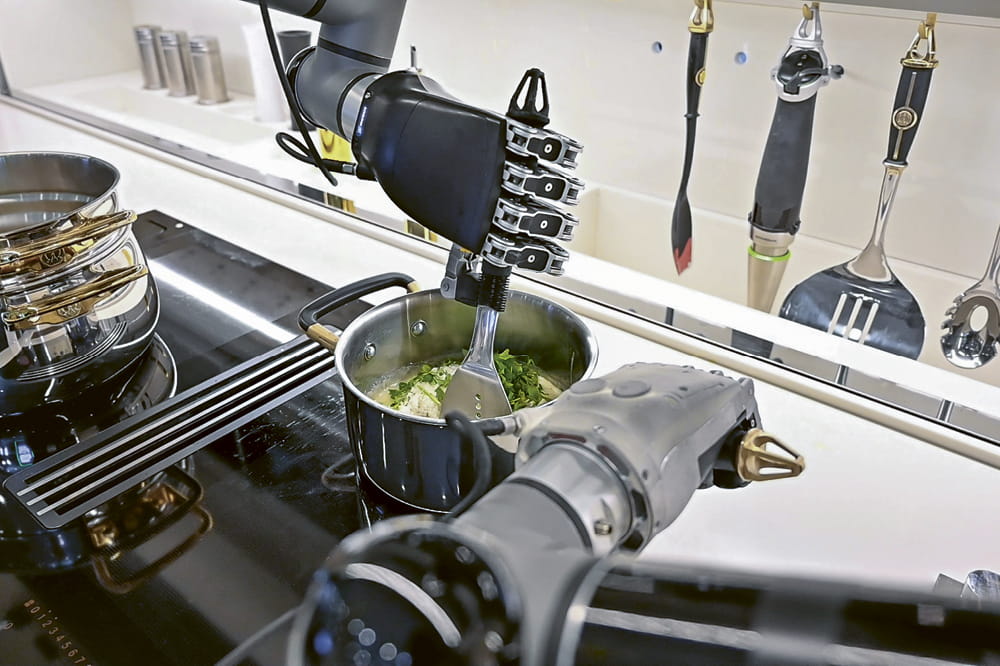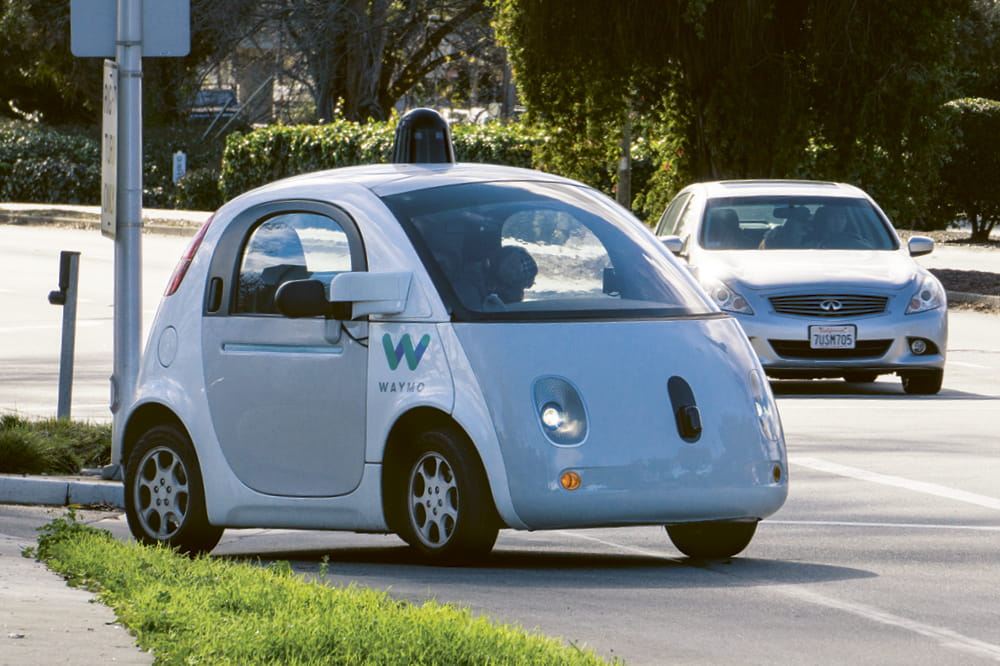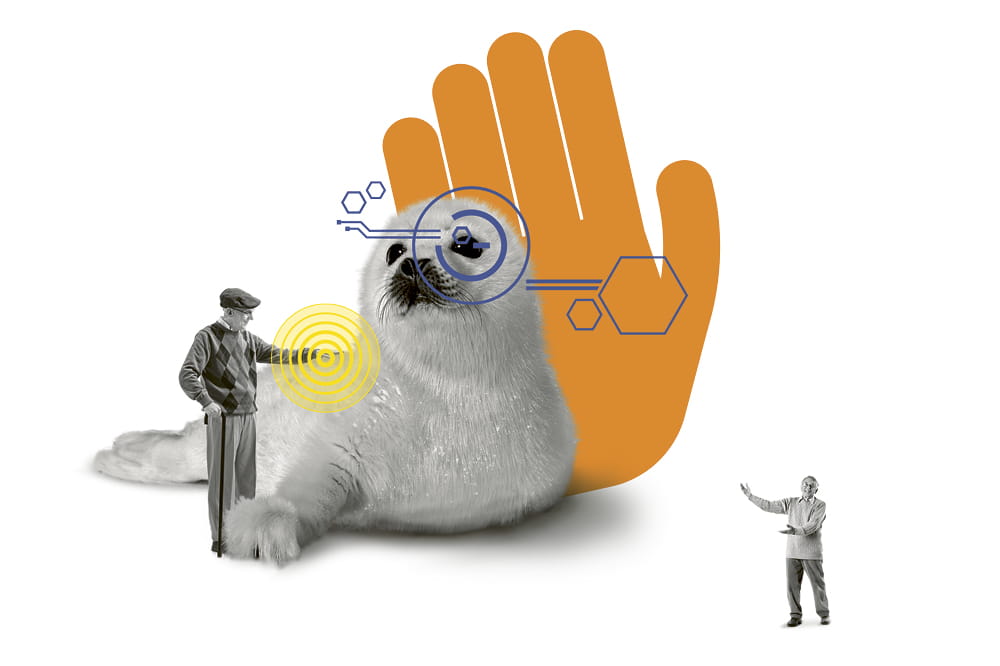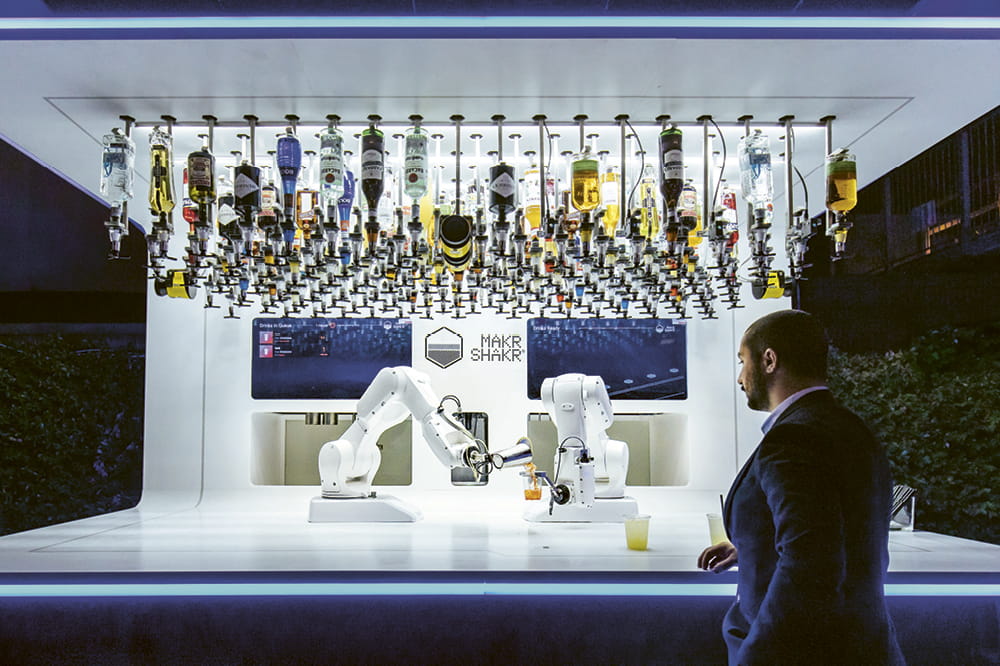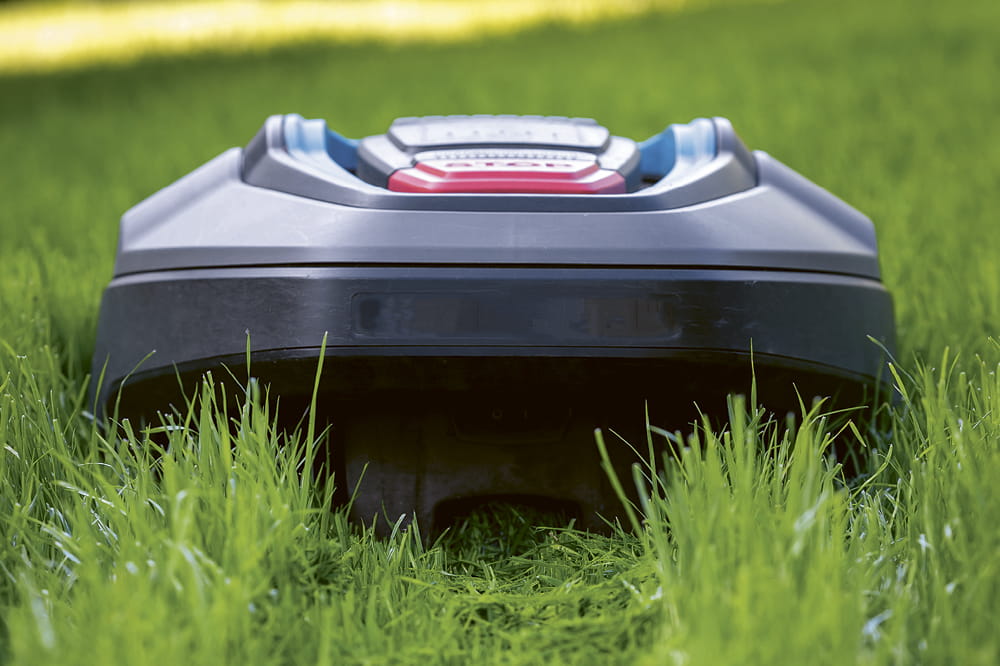Obtain news and background information about sealing technology, get in touch with innovative products – subscribe to the free e-mail newsletter.

No Way Around Robots
Even Freudenberg’s joint venture partners and subsidiaries are turning to robots. Greg Edwards (XALT Energy) and Atsushi Osada (NOK) offer a glimpse of their companies and homelands.
Robots enable our employees to build their skills.
Greg Edwards, Director of Manufacturing Engineering for XALT Energy
Greg Edwards, USA: The Director of Manufacturing Engineering, has worked for XALT Energy, a Midland, Mich.-based global developer and manufacturer of lithium ion technology solutions, since 2015.
Robots can really be found everywhere in the United States. In daily life and in industry, in particular. Automakers have long relied on help from robots for welding, painting and assembly. This is evidence that robots have proven strengths in repetitive activities. That’s what they do at XALT Energy. We have six robots at our site. We use them to assemble battery packs, among other tasks. A robot assembles battery cells into a single pack in several work steps. At an earlier stage, different robots sort by quality grade of the battery cells that we manufacture. They are programmed to identify non-conforming cells and automatically sort them out. In the process, we check to see whether the cells have the intended capacity and the specified internal resistance.
Robots are also taking over welding in battery pack assembly. It would take an employee about 30 to 45 minutes to weld an entire battery pack. A robot does the work in six to eight minutes and then places the pack on the conveyor for transport to the next stage. Our robots have accelerated our production process. Today we produce 30 battery packs per shift. Back in the prototype phase, our colleagues were only able to build two per day. Today, since we are making more batteries, we need more employees. We are currently trying to fill 100 new positions.
Incidentally, the robots that we use are typical stationary articulated-arm robots. We don't have cobots. Our employees naturally have to service the robots. We train our staff on how to deal with them. For example, they can program them and get them up and running again quickly in the event of malfunctions or breakdowns. In this respect, the robots enable our employees to build their skills.
We aren’t afraid of contact with robots, perhaps because many of us have grown up with animated films in which robots play a main role.
Atsushi Osada, Section Manager Global Sales & Marketing for NOK.
Atsushi Osada, Japan: Section Manager Global Sales & Marketing, has worked for seal manufacturer NOK in Tokyo since 1995.
In Japan, we are used to dealing with robots. We don’t suffer from a fear of contact. That may be due to the fact that many of us grew up with well-known animation films such as Astro Boy and Doraemon. Robots that closely resemble people play a main role in these films. I personally have a cleaning robot at home, and today there is no way to get around the use of robots at Japanese companies. They work precisely and quickly while helping to keep errors to a minimum. Furthermore, robots are capable of handling higher production volumes flexibly. They don’t let up.
At NOK, we use various robots in manufacturing. About twenty of them support production processes. For example, picking or transporting our seals and electronic products to the next station. With their help, we are supporting our employees and speeding up the manufacturing process. We are becoming more productive, efficient and profitable. By using robots, we are solving another problem as well: They help us offset the labor shortage. Incidentally, we also make parts needed for the actual production of robots. They include electronic items such as flexible printed circuits in addition to seals.
I am convinced that the industrial use of robots will continue to expand in Japan. Growth is looming in the consumer sphere as well. For example, robot pets are becoming more popular. I personally wouldn’t mind having a so-called Lovot. This is highly advanced, small yet cute robot with more than 500 parts. Lovots can respond to moods and promise to give their owners joy and energy in their daily lives.
This article originally appeared in ESSENTIAL, Freudenberg Sealing Technologies’ corporate magazine that covers trends, industries and new ideas. To read more stories like this, click here.
More Stories About Digitalization




